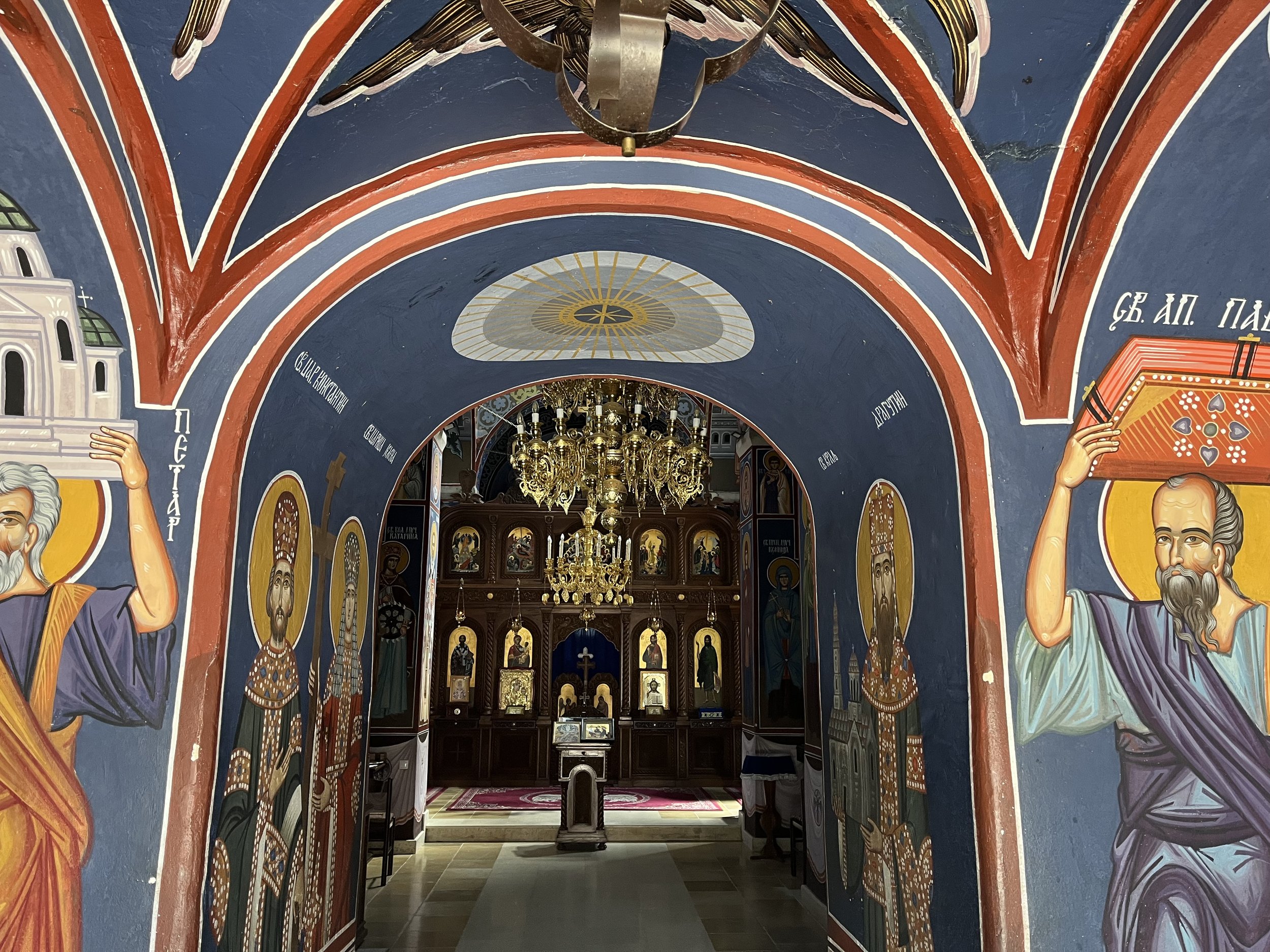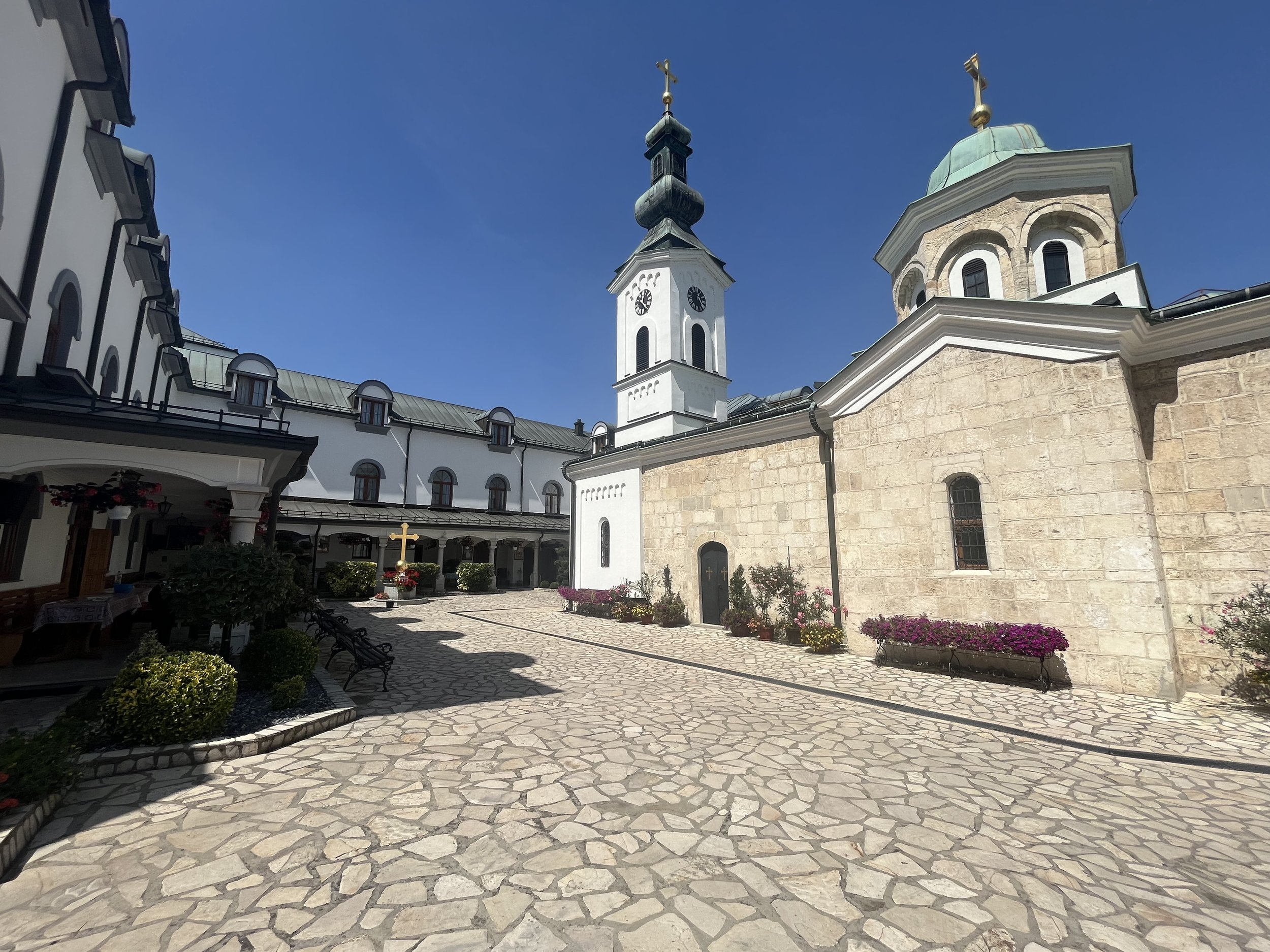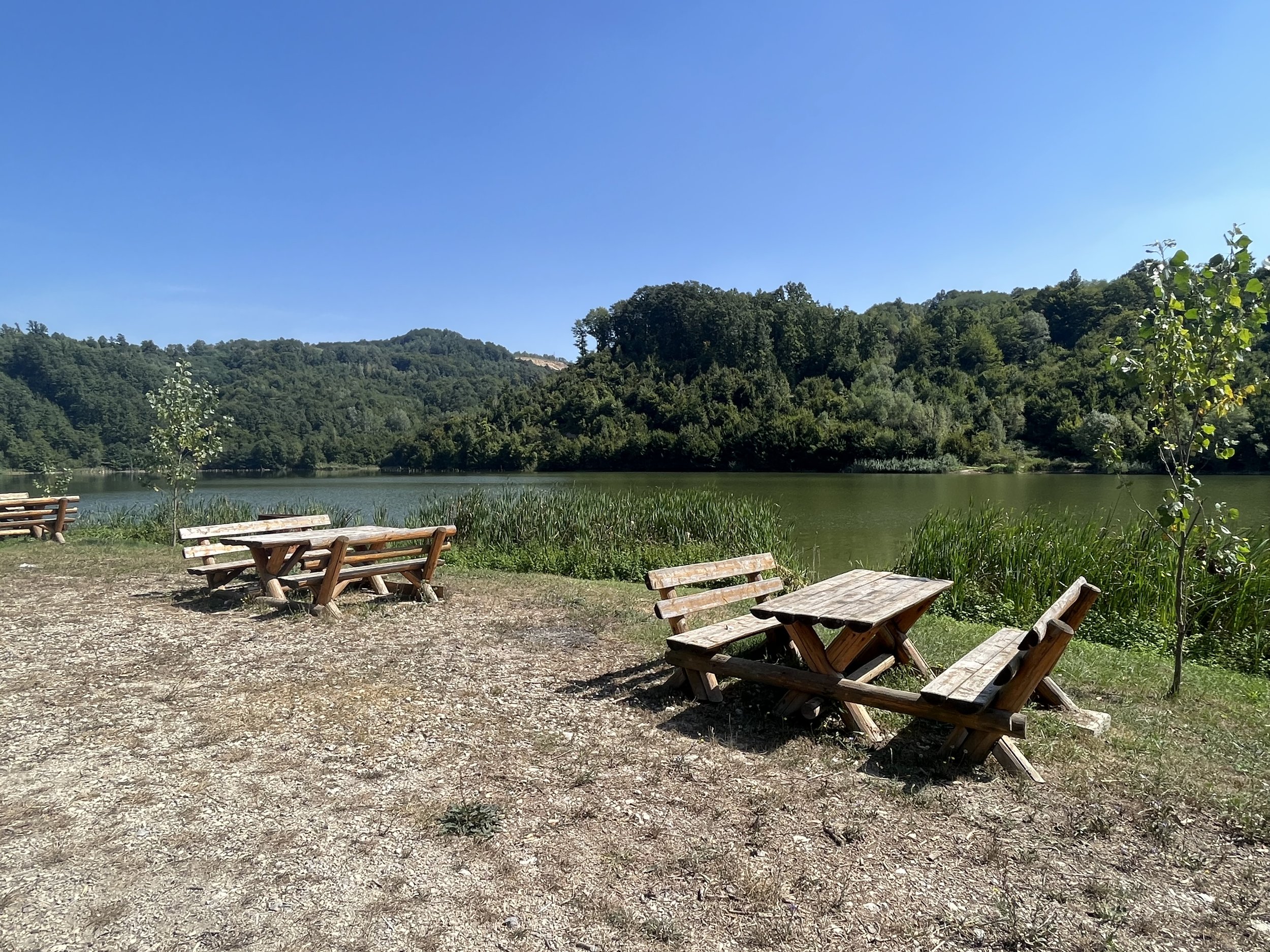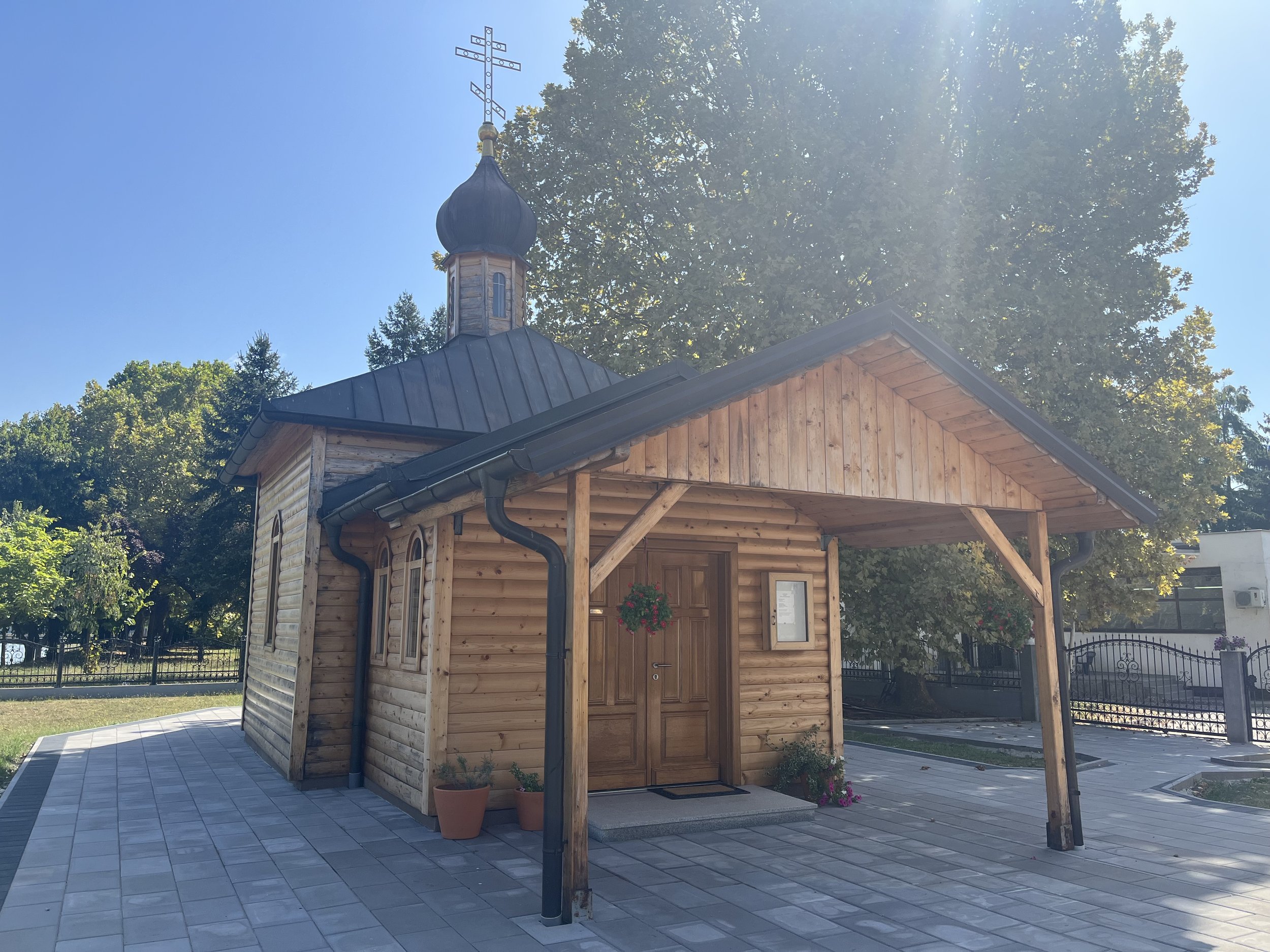UGLJEVIK
© John Bills
Regarding Ugljevik, it is easy to focus on the town today. The story here is similar to the one heard in Breza, Lukavac and other industrial towns that developed alongside mining in the 20th century. The clue is in the name, right? Uglaj is the Bosnian word for coal, and you can do your own math (maths?) from there. The future is not fuelled by coal, so places like Ugljevik look towards the future with some trepidation. The nicknames are unfortunate.
But, as visitors, why lament something of which you know nothing when you can admire and enjoy the gorgeous scenery that surrounds the town? Why talk pessimistically about the future of coal when you can learn about the life and songs of Filip Višnjić? Why get all worked up about industry when you can find peace and tranquillity in Ugljevik’s monasteries and churches? Life is short enough, my friend. Ugljevik is a friendly little town with curious historical tidbits and a romantic telephone box, with one of the best tourist organisation teams in the country. Don’t drink to your fears; cheers to the beauty of life. This is the land of coal, plums, honey and schnapps, and usually all four at once. Ugljevik, I’m a fan, bus station or no bus station.
TRANSPORT
© John Bills
Ugljevik’s bus station is dead, long live Ugljevik bus station (Njegoševa 4). I have used that phrase several times throughout this, but that is your problem. Everything was okay with the bus station here; never too busy but functional until the pandemic arrived, and everything went to the dogs. Now, it is a bus station only in memory. Buses do stop here, notably those running from Tuzla to Bijeljina, but I can’t really say with any confidence whether that is reliable. That makes Ugljevik simple to get to from either of those cities but pretty tricky to get out of. For a day visit, get the bus in from Tuzla before getting a taxi to Bijeljina (it should cost around 20km). Tuzla is much further away than Bijeljina, so I wouldn’t recommend getting a cab in that direction unless you are hella wealthy.
WHAT TO SEE AND DO
© John Bills
Filip Višnjić Cultural Centre
Filip Višnjić is the cultural titan who stands tall above Ugljevik. Not only the town but all of Serbian culture in these parts, from his gusle work to his collection of poems chronicling the First Serbian Uprising against the Ottoman Empire. The man was born in 1767 just outside modern Ugljevik, and the town’s cultural centre rightfully takes its name from the moustachioed troubadour. The building itself is fantastic, designed to look like the first miner’s building in town, and all Ugljevik’s big events occur here. It is so refreshing to see some effort put into the architecture of a cultural centre. The centre is in the heart of Ugljevik, with a statue of Višnjić outside, along with a statue of Mitar Maksimović and a Ćiro train. The centre houses Ugljevik’s library, a museum telling the story of the town and much more. Karađorđeva 3, +387 55 772 077
© John Bills
Tavna Monastery
Tavna Monastery actually sits on the border between Ugljevik, Bijeljina and Zvornik, but I’m going to go ahead and plop it here. Why? Because the good people of Ugljevik took me to see it, that’s why. Faith and serenity outrank geography, and Tavna Monastery is an exercise in the magic of belief and tranquillity. The monastery (20km or so south of Ugljevik) is a living, breathing, working place of worship and wonder, with all the bells and whistles such spaces provide. The current iteration was built on the foundations of the original, which pre-dates the Ottoman arrival, with it being explicitly referred to as a monastery in records dating to the 16th century. It hasn’t been the easiest few centuries since, but peaceful days are here now. Banjica, +387 55 552 455
Novak’s Cake
No, not Djoković. Novak’s Cave is half viewpoint, half subterranean mystery world, all awesome. It takes its name from the famous Hajduk Starina Novak, the hardy soul who supposedly lived here with his fellow freedom fighters while the troupe tried to rebuild Tavna Monastery. The monastery is a handful of kilometres southeast of the cave, which is some heck of a trek to work for a bandit. Gornja Trnova
© John Bills
Mezgraja Lake
Hidden off the road from Tuzla to Bijeljina, Mezgraja Lake is arguably the main event here. The lake was formed when a closed surface coal mine filled with groundwater, providing energetic locals with a gorgeous spot for strolls, picnics and romantic dalliances. If you are into camping, you can camp here, and there are perfectly placed benches for sitting and staring at the water. That is the best thing to do at a lake, after all.
© John Bills
Monastery of St Aleksander Nevsky
If you arrive in Ugljevik via bus from Tuzla, you’ll pass this monastery on the right side of the road, just before the hulking coal-fired power plant. You don’t get many monasteries directly next to massive factories. Russia funded and constructed the temple, which is 2km outside of town. The wood chapel is delightfully quaint. Ugljevik Power Plant
© John Bills
Ugljevik Power Plant
Now, I won’t sit here and implore you to visit the Ugljevik Power Planet. It has an utterly wretched record regarding environmental impact, for one, but you can’t really paint a picture of Ugljevik without bringing it up. It isn’t quite the elephant in the room, but it was the driving force for Ugljevik’s development and is the most crucial factor in its future. The coal-fired power plant generates a significant percentage of Republika Srpska’s electricity, and its flue gas stack is the single tallest structure in Bosnia and Herzegovina. Its future is a constant topic of conversation. Ugljevik 38, +387 55 774 100
© John Bills
Temple of Saint Petka Paraskeva
Consecrated in 2000, the Temple of Saint Petka Paraskeva is the central house of worship in modern Ugljevik. It carries itself with a quiet sophistication usually lacking in large churches and is all the better for it. The church is dedicated to Paraskeva, the 11th-century ascetic who has become the patron saint of needleworkers and weavers, among other things. Patrijarha Pavla 2, +387 55 771 494
BREWS, BOOZE AND BITES
© John Bills
Ugljevik is a small town, so don’t come here expecting a wide range of options on the food and drink front. It has enough to suffice, whether that is coffee at Hotel Atlas (Trg Đenerala Draže Mihailovića 11, +387 55 771 001), pizza at Atlantida (Prva Majevičke Brigade 2, +387 55 771 553), roštilj at Na Ugalj (Ćirila i Metodija) or a beer at Carpe Diem (Vojvode Kerovića 9, +387 66 006 695). If you want something a little private and a little special, contact the folks at Vodenica Stankić (Peljave, +387 65 693 180) and get ready for a feast by the river.
SLEEPING
© John Bills
Hotel Atlas (Trg Đenerala Draže Mihailovića 11, +387 55 771 001) is an excellent overnight option in the town centre, with English-speaking staff and a delightfully professional sheen to it all. There are also a few private apartments, but go for Hotel Atlas. Unless you are doing the whole ‘taxi to Bijeljina’ thing.









